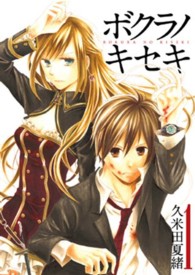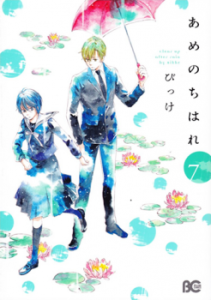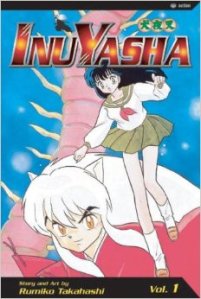To be honest, one of the things that motivated me to start learning Japanese five years ago was that I wanted to be able to read manga and Japanese books that haven’t been translated into English. There’s a wealth of fantastic series and novels to partake in if you can read the language, and I’m happy to say that I’ve reached the point where I can enjoy reading some things in Japanese (although too much kanji with no furigana can still be a sure way to a headache). Now my dilemma is that even if I can read untranslated manga, I wish I could share it with those who can’t read Japanese. Of course, there are plenty of groups willing to release unofficial translations, but for the sake of making great series available to a wider readership while still giving the manga industry and the mangaka the support that they deserve, here are a few series I would love to see get official English translations:
ボクラノキセキ/Bokura no Kiseki/Our Miracle by Natsuo Kumeta
Bokura no Kiseki centers on Minami Harusumi, a boy who believes that the reoccurring dreams he sees of a princess are fragmented memories of his past life. Sharing his theory in elementary school, however, results in social isolation, and when he ends up using dangerous magic, a remnant of his past life, on school bullies, Minami decides to keep everything associated with his past life a secret. Yet after keeping quiet for years, assimilating into high school, and even getting a girlfriend like a normal student, he and his friends are suddenly attacked by someone who seems to have some connection to Minami’s past life. Life as Minami and his classmates knew it breaks down into confusion as the attack triggers more and more students at the school to remember pieces of their previous lives, and their new lives become increasingly tangled in the betrayals and mysteries of the past.
Going from the standard misunderstood-kid-who-finds-friends plot to something much more intricate in a matter of chapters, Bokura no Kiseki might have collapsed under its own weight in the hands of a less skilled mangaka. With two interwoven storylines, one in present-day Japan and another in a medieval-like fantasy world, there’s a lot going on. Characters try to piece together what happened in their past lives while working through present mysteries and problems that arise from remembering their pasts, such as who is really who. In order for Bokura no Kiseki to go beyond an okay manga with stock characters, the characters from both past and present must also be carefully developed. Fortunately, mangaka Natsuo Kumeta is one of those rare people up to the task of following through with such an extensive narrative and cast. At eleven volumes so far, Kumeta has proven herself a master of crafting stories, pacing the narrative just right to develop her characters and their relationships while still dipping into intense moments of action, building intrigue, and delivering compelling plot twists. In many respects, Bokura no Kiseki reminds me of the aspects that I loved about another series about reincarnation that has been translated into English, Please Save My Earth.
Lastly, gender roles seem to have practically dissolved away in Bokura no Kiseki. I initially struggled with what to say about how male and female characters are portrayed in Bokura no Kiseki because it’s a hard thing to define in a series where girls have been reincarnated as boys and vice versa. But the fluidity that makes it difficult to differentiate the boys’ roles from the girls’ is part of what I love about this series, as well as the crucial fact that it depicts female and male characters playing a wide range of parts in both lives. Its gender representation is subtle but well-executed so far. To top it off, Kumeta’s art is quite attractive, and the series offers a good mix of action, intrigue, modern and fantasy world, and even a side of romance that should please a wide range of readers.
7SEEDS by Yumi Tamura
The mangaka of my second pick should be familiar to at least some English speakers. Yumi Tamura’s work has been translated into English before, the most notable of those being her 27-volume shoujo epic, Basara. Although both Basara and her ongoing series 7 SEEDS transport readers to a post-apocalyptic Japan, 7 SEEDS does not have the same level of romantic elements that Basara has, with it’s plot of a girl taking her brother’s place as the “boy of destiny” and falling in love Romeo-and-Juliet style with her enemy. It’s a harsher vision, abruptly plopping its readers and characters alike in a hostile, Jurassic Park-like future. Natsu, a high school student from modern-day Japan, awakes one day to find herself with several other young men and women in this strange land without a clue as to where they are or what has happened. The truth, they find out, is that the world has undergone a change similar to the one that wiped out the dinosaurs, and that they, and a number of other people, were cryogenically frozen as part of a top secret government project meant to safeguard the survival of the human race. Now, with nothing but the supplies they woke up with, the natural resources of the land, and each other, they must learn how to survive this dangerous future.
Despite what might sound like the premise of a B-grade movie, 7 SEEDS is truly an A-grade series. Although there are plenty of close calls with nature, the characters are the heartbeat in this relatively slow-paced narrative where sometimes the actions of characters are rather mundane, such as looking for shelter. That suits a mangaka like Tamura just fine, however, giving her the chance to show off her excellent writing skills. She builds up a strong mix of characters, getting inside their heads, slowly unraveling their strengths and weaknesses, and then letting the characters bounce off each other and grow, or fall. Tamura knows how to work drama in order to capture the reader’s emotions. She makes a smart move, too, injecting an extra layer of interest into the narrative by switching among a number of characters rather than sticking with one protagonist. This allows her to keep the momentum of the story going, leaving one party once those characters get relatively settled and moving on to another, then back again. Much of the anticipation arises from what will happen when these parties meet, and Tamura pulls out all the cards when they do, adding conflict and, yes, even a little romance at times.
Having such a large cast also shows off Tamura’s range for character writing. Both her male and female characters are wonderfully developed and are never constrained to gender roles or stereotypes. (In fact, while gender roles are not as much in focus as they are in Basara, there have been a number of moments in the series that deal directly with gender issues.) And with multiple protagonists, you’re bound to find at least one character that piques your interest.
あめのちはれ/Ame Nochi Hare/Clear Weather After the Rain by Bikke
Ame Nochi Hare is one of the more fantastical gender bending tales that I’ve encountered, but it’s also among the more interesting in terms of its exploration of gender. The plot is relatively simple. Five high school boys, Hazuki, Toma, Yusuke, Madoka, and Junta, are just getting settled into their new, all-boy school when they’re caught in a rain storm. For some inexplicable reason, the storm causes a change in them and whenever it rains, the five of them change into girls. Now, the boys must keep their odd transformation a secret while trying to navigating life and love with two identities.
Before you stop reading, imagining an empty story filled with more boob and panty hijinks than substance, rest assured that this manga is an unusually thoughtful and whimsical treat. As it is a shoujo series, there’s romance abound, and it takes rom-com levels to the max with not just one but five characters who get into all kinds of sticky situations on account of their erratic gender bending. But the true rarity of this series is that, beneath the comedic romance troubles, is a story that delves into serious discussions of gender, framing the boys’ gender bending experience as a chance for them to learn what it’s like to live as women. At the same time, we see the struggles the boys have as boys. And while we have yet to see whether any of the boys decide they prefer life as a woman, the series does expand beyond depictions of straight men and women with at least one well-developed character in the cast who loves someone of the same sex. But even if all the boys decide they’re heterosexual men, the idea of people of the opposite sex learning to understand each other’s experiences is an intriguing one, and it’ll be interesting to see what effect those experiences have on the characters in the long run. Ame Nochi Hare is a sweet gender bending series curious about the different experiences of young men and women, and I’m just as curious to see where it takes its readers next.
—
Well, there are some of the untranslated gems that I would love to share with others! Do you have any untranslated manga series that you’d love to receive an official translation?

























